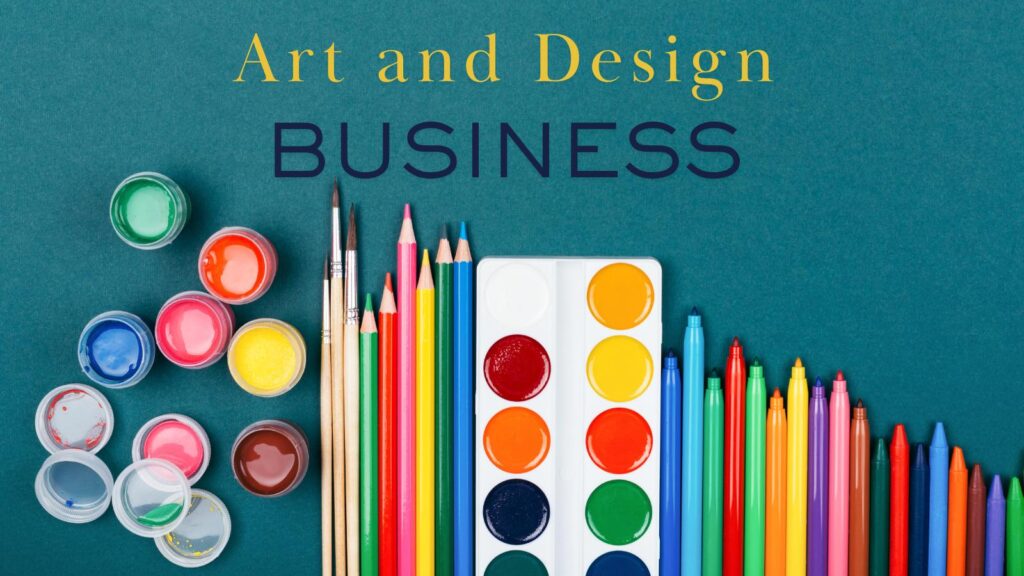The art and design business is booming, partly due to new, innovative tools and services that allow creators to market themselves better than ever before.
As is the case with running any business, though, that doesn’t mean that success isn’t behind a long series of high hurdles; if you want to give back and showcase your art to the world, your goals often require seeking help from various sources.
In this article, you’ll learn about 10 tools and services you can utilize today to help you on your way.
Table of Contents
10 Tools and Services
1. On Professional Design Software
In many cases, a change in the leading software you use to create can make the most significant difference of all – no matter which particular weakness you’re trying to overcome or the area you’d like to improve in.
If you can find a piece of software that accomplishes many vital tasks from one package, you’re onto a winner. Consider each aspect of what you do – sketching, vector graphics, animation, or whatever else – and try to take a minimalist approach and work using as few pieces of software as possible.
Reducing your workflow to only two or three software packages can drastically speed up and, perhaps most importantly, uncomplicate your work so that you can focus on what’s most important.
2. Tablet-Based Illustration and Art Apps
You’re likely missing out if you haven’t considered using a tablet to improve your work. The biggest software providers, like Adobe, now offer their software in tablet form, and there are several other excellent choices (like Procreate, for example) that you can use to improve your workflow.
The benefit of using a tablet is how intuitive it is. You can take an iPad Pro and Apple Pencil anywhere you like and immediately seize the opportunity to create without the need to carry around a notepad and all your other art equipment.
The combination of hardware and software enables your imagination to run free and unrestricted in a way few other methods of the past have allowed for.
3. Print on Demand Platforms
Print on Demand services are invaluable if you want to print and sell your designs on various products, such as clothing, mugs, phone cases, t-shirts, and whatever other marketable item you think your art would work great on.
They allow creators to sell without the need to hold inventory, meaning their opportunity for profitability is high while their overall investment remains low. These services are the perfect way to start expanding and discover what resonates with their audience.
4. Freelance Marketplaces For Art and Design Business
If you’re starting, don’t forget to investigate the available online freelance marketplaces. Upwork is a great place to begin: you create a profile that lists your portfolio, skill set, and the services you offer, and connect with like-minded people who need work completing.
Many artists and designers use freelance marketplaces as their primary or secondary income. If you’re currently trying to get your business off the ground, consider selling your services to other companies and individuals in this way.
5. Membership and Subscription Platforms
Cementing yourself as a successful art and design business goes a lot further than basic transactions, and you should know about many different elements of the process of retaining customers over the long term.
One of the most useful is creating a membership and subscription platform. In this model, a creator offers a subscription for their most loyal customers in exchange for exclusive content, which could include access to unique designs or early access, behind-the-scenes stuff, educational resources, and more.
The possibilities are endless, and it’s a fantastic way of building a stable following.
Image Credit: Pexels
6. E-commerce Storefronts For Art and Design Business
If you want to sell your own artwork and designs, having your own digital storefront is one of the best ways to do it. Having an E-commerce store allows you to funnel all of your efforts working freelance and marketing on social media back to one hub so that people can actually buy your stuff.
Website design can be a complex topic, but generally, you want something that looks clean, modern, and without clutter and ads if you can help it (the fewer distractions there are between you and your customers, the better). You should also always keep in mind that many users will be viewing your store on a mobile device.
Always test the final product on a desktop computer simultaneously with a tablet and smartphone to ensure that it meets all the requirements.
7. Project Management Tools
As mentioned in the intro to this article, running an art and design business is hard work, and one of the most challenging parts is the many hats you must wear to get things done. Organization is everything, but sometimes, it isn’t easy to see the wood for the trees because you’re managing several things at once.
This is where project management tools can be helpful. For example, tools like Monday.com have become incredibly popular, allowing you to seamlessly collaborate with other key individuals and ‘map out’ a complicated project in minutes.
8. Online Portfolio Platforms of Art and Design Business
Suppose you’re working from home and predominantly online. In that case, you don’t have the luxury of having a physical storefront where you can display your work for potential customers to see – and even if you did, you’d still want to leverage the benefits of using online portfolio platforms.
There are many of these available, but they all essentially do the same thing: showcase your work to anyone interested in learning more about it. At its core, marketability is all about increasing your visibility.
While your website helps with this, dedicated portfolio sites get straight to the point for busy, high-paying clients who want to see what you’re about at a glance.
9. Art and Design Business Accounting and Invoicing Software
As a creator, the prospect of going through hours of tedious accounting and invoicing tasks is probably the last thing you want to do, but the reality is that these matters must be prioritized. If you want to increase your profitability, you need to know exactly where money is coming in and going out – that’s a fact.
Thankfully, the days of manually managing these aspects of a business are gone. Many software packages offer invoicing and accounting services that can quickly and seamlessly integrate with your art and design company.
10. Digital Product Platforms
These days, art and design aren’t just about selling physical works. There’s a lot you can do in the digital realm to make money – and not just sell your main products through the internet.
For example, many artists design and sell digital brushes and other assets for use in the top professional packages discussed earlier. This is often paired with tutorials and educational resources that are also offered for a fee. Similarly, you could also write an ebook or a course.
These are things that can continuously passively earn you income, so don’t overlook them.
Image Credit: Pexels
A Few Final Tips For Your Art and Design Business
With the leading suggestions covered, here are a few general tips to close off with:
Always Seek to Diversify Your Income Stream
As has been explored in this list, try to keep an open mind and constantly look for new ways to diversify what you do. Some stuff will land, some things won’t, but give yourself options, and don’t just rely on one stream of revenue as you work towards your ultimate goal.
Invest in Marketing and Branding for Business art Designs
Marketing is essential in everything you do as a business owner. While many of the strategies above incorporate marketing naturally, you should still dedicate time to marketing in general.
Social media marketing is vital these days, so it’s a good idea to channel your efforts there, to begin with and work to build up a following.
Reaching out to professional marketing services can be advantageous, especially early on. Marketing is a very broad field with many moving parts, so having someone in the know plot a route for you can help a lot.
Manage Your Time Effectively Starting an Art Business
Naturally, there’s a strong correlation between wasting time and losing money. Find what works best for you, set deadlines, and do your best to stick to them.
As a business, prioritizing time management goes a long way in keeping you on the straight and narrow.
Be Adaptable in the Business of Art and Design
Especially for businesses working predominantly online, it’s essential to hone the skills required to be adaptable. This industry (and online industries in general) can change drastically on a dime. You must constantly analyze your performance, and you’ll likely switch strategies at several points on your journey.
Hopefully, this article has enlightened you on the numerous possibilities for increasing your revenue as an art and design business. It won’t happen overnight, but there’s plenty that you can do that adds up over the long run. Good luck!




